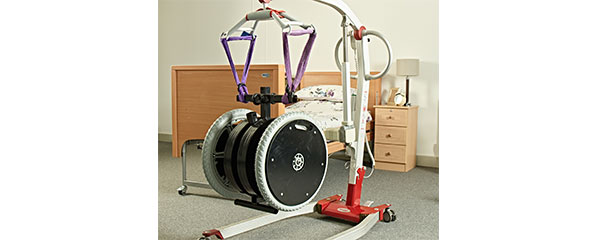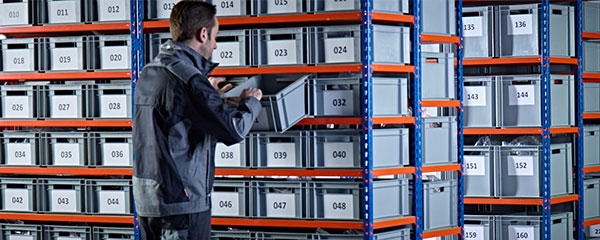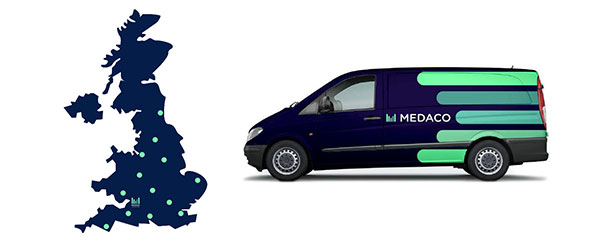LOLER Inspections vs Annual Service: What’s the difference?
15 Minute Read
LOLER | Patient Handling Equipment | PPM | PUWER | Regulations | Service
We’ve all been there with our cars when booking in for the regulatory MOT and wondering if you should also get a full service at the same time. Whilst your MOT ensures your vehicle is roadworthy and meets the minimum requirements at that moment in time. It doesn’t check non-safety elements or provide maintenance to prevent damage and keep it in peak condition. This is where a full service is recommended, to prolong the life of your car and reduce the likelihood of irreparable damage.
There are some care facilities in the industry that think the same when it comes to LOLER and Annual Servicing of patient handling equipment. So we’ve dived into what is involved and the benefits of using both these services in your care home, hospital or SEND school.
What is a LOLER Inspection?
LOLER stands for the Lifting Operations and Lifting Equipment Regulations which came about in 1998. The regulations place duties on people and companies who own, operate and have control over lifting equipment.
This includes patient lifting equipment such as mobile hoists, ceiling hoists, bath hoists etc. as well as lifting accessories such as patient slings, harnesses and hoist scale attachments. It is therefore relevant for care environments such as care homes, hospitals and SEND Schools.
LOLER requires that all equipment used for lifting is:
- Fit for purpose
- Meets the minimum safety requirements
- Appropriate for carrying out the intended task
- Suitably marked with the safe working load
- Is subject to a statutory periodic thorough examination
Records must be kept of all thorough examinations and any defects must be reported to the person responsible for the equipment.

To ensure your equipment and accessories remain safe for use, LOLER inspections should be carried out throughout the lifetime of equipment, at the following times:
- Before first use (unless there is a valid Declaration of Conformity made less than 12 months earlier)
- Once it has been installed or if it has been moved and reassembled in another location
- Every 6 months
- After an incident or dangerous occurrence when the equipment is exposed to deterioration, liable to result in danger
- After long periods of inaction
- After significant repair or a part has been replaced
More information can be found on the Health and Safety Executive website.
What is involved in a LOLER inspection?
A LOLER inspection is a thorough examination of all matters which affect the safety of the lifting equipment and a judgement on the continued safety of the equipment.
The Health and Safety Executive (HSE), recommends a LOLER inspection should include the following as a minimum:
- A visual examination
- Basic functional checks
- Measurements of wear and tear
- Notes of defects such as cracks, corrosion of vital parts, excessive wear or significant misalignment
- Reporting of equipment that isn’t safe to use
- A written report containing all the required information as specified by Schedule 1 of LOLER.
Some service providers, such as Medaco will also include additional services:
- Quick and basic remedial work if possible, such as tightening up loose bolts, checking battery amperage and calibration checks where necessary
- Check that it’s been serviced and maintained according to the manufacturer’s recommendations
Even though the HSE recommends certain checks, you shouldn’t take it for granted that every service provider is carrying out the necessary elements of a LOLER inspection. Therefore, it is important to ask for them to provide details on exactly what they are checking. This can sometimes be the reason why service providers vary in price for LOLER inspections.
The benefits of a LOLER Inspection
Who is responsible for LOLER?
The person in the organisation who owns or rents the equipment is responsible for ensuring that LOLER inspections are completed and all the necessary paperwork is filled out and kept on file.
This responsibility can fall under several departments depending on the size and structure of the organisation. For instance, it might be the estates and facilities team, procurement, operations or even the care home manager/school business manager. It’s good practice to ensure this is clarified to all staff so that if they find equipment that is out of compliance, they know who to report this to.
When using a service provider such as Medaco, we take away the burden of managing the LOLER inspections on your assets across all sites. Service schedules are agreed upon at the start of the contract and we ensure they are maintained throughout to make sure you don’t fall out of compliance. Our scheduling team will contact you 2 weeks before your service is due, to book this in and make sure you are prepared. You will receive a copy of your reports within 24 hours and they will also be available on your customer portal for future reference.

What is an Annual Service on moving and handling equipment?
In short – an annual service, or planned preventative maintenance, is like a full service for your car. They go through the manufacturer’s recommended checks, replace parts that make your equipment run smoothly and prolongs its life. Like a car service, an annual service on your patient handling equipment can address small niggles before they become an issue and threaten the long term health of your equipment. It’s about planned preventative maintenance to keep your equipment working longer in its best condition, not just a visual check like a LOLER inspection.
Unlike a car service, which is optional. A service on patient lifting equipment is regulated by (PUWER) – the Provision and Use of Work Equipment Regulations 1998. PUWER states that employers and others in control of work equipment are required to keep it ‘maintained in an efficient state, in efficient order and in good repair”.
PUWER advises that the frequency of maintenance should be determined by the following:
- the manufacturer’s recommendations
- the intensity of use
- operating environment (e.g. the effect of temperature, corrosion, weathering)
- user knowledge and experience
- the risk to health and safety from any foreseeable failure or malfunction
Manufacturers provide different instructions and recommendations in their user manuals, for what maintenance is required to keep equipment safe and what schedule you should keep to. Most will state that their equipment should be periodically inspected at least once a year.

It’s worth noting that PUWER applies to all work equipment including profiling beds, assisted bathing equipment without an integrated hoist, shower trolleys, couches and plinths. Whereas LOLER doesn’t apply to these.
What is involved in an Annual Service on moving and handling equipment?
Just as every car is different, so is the equipment used in care. Based on the manufacturer’s guidelines, different makes and models require action in different areas from year to year. The below list provides the common checks and maintenance work across different equipment types but this isn’t exhaustive:
- Full functionality test
- Detailed inspection of key components
- Structural inspection of key safety parts such as the boom and mast of a mobile hoist, track and anchor points of a ceiling hoist track, or the floor fixings of an assisted bath
- Actuator inspection
- Control box inspection
- Inspection of fixings such as nuts, bolts, screws and fasteners for excessive wear. Tighten or replace if required.
- Electronic connections and wires tested such as batteries and limit switches

- Lubrication of necessary components such as pivot points, pedal assemblies, joints etc.
- Changing key components based on manufacturers’ recommendations such as the lift tape on a ceiling hoist pod
- Waste systems drainage and filter inspection for bathing equipment
- Thermostatic mixer valve calibration on bathing equipment
- Temperature and cold supply failure shutdown tests on bathing equipment
- Calibration of weighing scales
- Checking bedrails on profiling beds are following the MHRA Side Rail Regulations 60601/2/52
- A LOLER inspection, with label and report for compliance
- Service report on each equipment with key details such as condition, year of manufacture and usage to help you make informed decisions
- A full Load test, where applicable, is carried out per the manufacturers’ test procedures and the directive detailed in EN ISO 10535:2006 – Annex B – Periodic Inspection B1

As mentioned with LOLER inspections, it’s important to check with your service provider the exact checks and tasks they are completing during an annual service. Some service providers will carry out the minimum requirements whereas others may provide additional services within the contract. This can be why service providers vary in price for annual servicing.
For example, Medaco offers asset management as part of their contract which combines equipment audits and condition reports. Using the data gathered from each visit will allow you to make informed decisions on whether to repair or replace, as well as proactively budget for lifecycle replacements.
Medaco can also adapt service checks to meet customers’ specific requirements, such as if there has been a legionella outbreak, you may want more extensive checks completed on your assisted baths which aren’t covered in the manufacturer’s recommendations.
The benefits of an Annual Service
Who is responsible for an Annual Service?
Same as with the LOLER inspections, employers or anyone who is in control of or owns the equipment within your care facility. You may also be interested in understanding who can carry out a LOLER inspection and Annual Service on your patient lifting equipment.
Don’t forget the daily checks needed for patient lifting equipment
Even with a LOLER inspection every 6 months and a service every 12 months, a lot can change with equipment in between these visits, especially in high usage environments. So it’s important for those using the equipment, to visually inspect it before carrying out a transfer. Even if you are familiar with using the equipment, some basic checks can avoid an incident.
These daily checks can also flag up equipment issues which can be rectified before a service or inspection is due. This helps eliminate the risk of your service provider condemning equipment during an inspection.
So, do I need an Annual Service as well as LOLER inspections?
The answer is yes!
A LOLER inspection is regulated under LOLER and an annual service is regulated under PUWER and manufacturers’ guidelines for use.
Just like a car – if you don’t service and maintain it regularly, the small concerns which could have been picked up and rectified will only get worse. Not only could it cost you more to rectify a bigger issue, think of the inconvenience of not having a working car, or in this case that crucial piece of equipment your care staff and service users need.
Not every service and maintenance provider carries out all the checks listed above, so be cautious when they are quoting low prices for this service.
Speak with Medaco if you want peace of mind that you will not only remain compliant but have a dedicated account manager, proactive asset management reports, quick responses and excellent customer service to ensure your equipment remains in safe and working condition.
You ask – We answer
This blog is from a new series focusing on ‘You ask – We answer’ where we aim to answer the hard-hitting questions our customers are asking. If you have a burning question you would like answered, just type it in the box below.
Interested in more articles like this? Sign up below to get notifications of new articles published.
If email isn’t your thing, follow us on our social channels for all the latest updates from Medaco.



